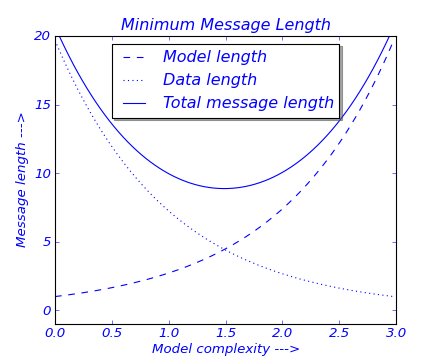

(Source code, png, hires.png, pdf)

"""
Recursively find all objects that match some criteria
"""
import numpy as np
import matplotlib.pyplot as plt
import matplotlib.text as text
a = np.arange(0,3,.02)
b = np.arange(0,3,.02)
c = np.exp(a)
d = c[::-1]
fig = plt.figure()
ax = fig.add_subplot(111)
plt.plot(a,c,'k--',a,d,'k:',a,c+d,'k')
plt.legend(('Model length', 'Data length', 'Total message length'),
'upper center', shadow=True)
plt.ylim([-1,20])
plt.grid(False)
plt.xlabel('Model complexity --->')
plt.ylabel('Message length --->')
plt.title('Minimum Message Length')
# match on arbitrary function
def myfunc(x):
return hasattr(x, 'set_color') and not hasattr(x, 'set_facecolor')
for o in fig.findobj(myfunc):
o.set_color('blue')
# match on class instances
for o in fig.findobj(text.Text):
o.set_fontstyle('italic')
plt.show()
Keywords: python, matplotlib, pylab, example, codex (see Search examples)